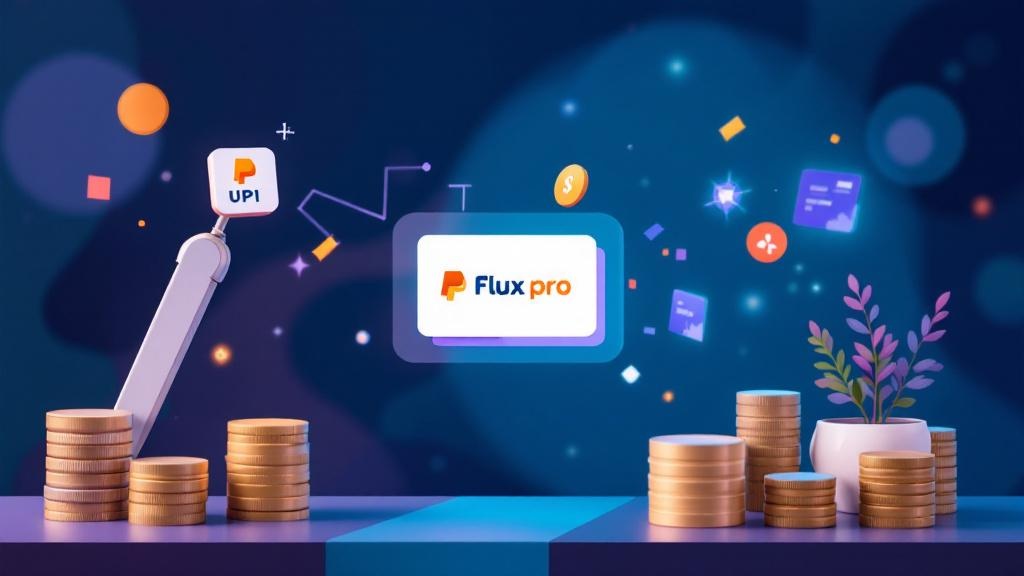In recent years, digital payments have transformed the way people manage transactions, especially in India. One such advancement in the digital payment ecosystem is the UPI (Unified Payments Interface) e-mandate. If you’ve ever set up automatic payments or recurring subscriptions, you’ve likely encountered an e-mandate. But what exactly is an e-mandate in UPI 3.0, and why should you care? Let’s break it down in this detailed guide.
What is a UPI E-Mandate?
A UPI e-mandate is a digital authorization mechanism that allows users to approve recurring payments or subscriptions through the UPI platform. This mandate automates the process of payments, ensuring that the payment is deducted from the user’s bank account automatically on a predefined schedule, whether it’s daily, monthly, or yearly.
Introduced in UPI 3.0, the e-mandate functionality simplifies recurring payments, making it easier for users to manage everything from utility bills to subscription services without having to manually authorize each transaction.
How Does UPI E-Mandate Work?
UPI e-mandates function as a form of digital standing instruction. Once the user approves a payment, it is recorded on the UPI platform, allowing payment gateways and merchants to debit the user’s account automatically, based on the agreed terms.
The process generally involves the following steps:
-
User Approval: The user provides consent for a recurring payment (e.g., for an internet subscription, insurance premiums, etc.).
-
Mandate Creation: A digital authorization request is sent via the UPI network to the bank.
-
Bank Approval: The bank processes and stores the mandate for future use.
-
Payment Deduction: On the due date, the payment is automatically deducted without the user needing to intervene.
What Are the Key Benefits of UPI E-Mandates?
-
Convenience
No more manual approvals for recurring payments. Once the e-mandate is set up, payments are made automatically, saving time and effort. -
Security
UPI 3.0 is known for its secure transactions. The e-mandate process follows stringent RBI (Reserve Bank of India) guidelines, ensuring a high level of security for both users and merchants. -
Increased Compliance
UPI e-mandates help ensure compliance with the RBI’s auto-debit rules, making the entire process transparent and controlled. -
Reduced Late Payments
Since the payments are automated, there’s a reduced risk of missing important deadlines, such as bill payments or subscription renewals. -
Faster Payments
E-mandates enable quicker processing of payments, reducing delays compared to traditional payment methods.
Setting Up UPI E-Mandate
Setting up a UPI e-mandate is an easy and straightforward process. Here’s a step-by-step guide:
Step 1: Choose the Payment Service Provider
Start by selecting the service or merchant with whom you want to set up recurring payments. For example, a streaming service like Netflix or an insurance company offering monthly premium payments.
Step 2: Opt for UPI as Payment Method
During the checkout or subscription process, select UPI as the payment method. Many service providers will offer the option of enabling recurring payments via UPI.
Step 3: Authentication
After selecting UPI, you will be prompted to authenticate the mandate using your UPI PIN. This step ensures that you are the one authorizing the payment.
Step 4: Confirmation
Once authorized, you will receive a confirmation from your bank, and the payment schedule will be set. From now on, the payment will be deducted automatically based on the schedule.
UPI E-Mandate Example
Let’s consider a real-life example of how a UPI e-mandate works.
You’re a subscriber to an online learning platform, and the monthly subscription fee is Rs. 1,000. You choose to set up an automatic monthly payment using UPI. Once you authorize the e-mandate, the platform can now debit Rs. 1,000 from your bank account every month, without you needing to manually approve each payment. This is all done through your bank’s UPI system.
UPI E-Mandate vs. Traditional E-Mandates (eNACH)
You might wonder, “What’s the difference between UPI e-mandates and traditional e-mandates like eNACH?”
-
Technology Platform:
-
UPI e-mandates are powered by the UPI ecosystem, offering a seamless and fast transaction process.
-
eNACH (National Automated Clearing House) mandates work through the NEFT or RTGS infrastructure, and while they are widely accepted, they often require more time to process.
-
-
Speed:
-
UPI e-mandates provide near-instant payments.
-
eNACH can take a longer time to process, often up to a few days.
-
-
Flexibility:
-
UPI e-mandates support instant approval and can be modified easily.
-
eNACH mandates may require more paperwork and time to amend.
-
Difference Between UPI and E-Mandates
While both UPI and e-mandates are payment systems, they are designed for different purposes. UPI allows one-time transactions, whereas e-mandates are tailored for recurring or scheduled payments. In essence, e-mandates are a subset of UPI services.
What Are the UPI E-Mandate Banks List?
Many banks in India now support UPI e-mandates. Here’s a list of some of the major banks that facilitate UPI e-mandate services:
-
State Bank of India (SBI)
-
HDFC Bank
-
ICICI Bank
-
Axis Bank
-
Punjab National Bank (PNB)
-
Bank of Baroda (BoB)
-
Yes Bank
These banks allow customers to link their accounts to merchants for automatic payment deductions.
FAQs on UPI E-Mandates
1. What is the full form of UPI e-mandate?
The full form of UPI e-mandate is Unified Payments Interface e-mandate, which enables automatic, recurring payments via the UPI network.
2. How can I set up a UPI e-mandate for recurring payments?
To set up a UPI e-mandate, simply choose UPI as the payment option while subscribing to a service, authenticate using your UPI PIN, and approve the recurring payment schedule.
3. Are UPI e-mandates safe?
Yes, UPI e-mandates are secure as they comply with RBI regulations and utilize the same security measures as regular UPI transactions.
4. Can I cancel a UPI e-mandate?
Yes, you can cancel a UPI e-mandate through your bank’s UPI platform or by contacting the merchant or service provider.
5. What is the difference between eNACH and UPI e-mandates?
eNACH is a traditional system for auto-debits through NEFT/RTGS, whereas UPI e-mandates are faster and more flexible, operating within the UPI framework.
6. How do I approve a UPI e-mandate for subscription payments?
When setting up a subscription, you will receive a request for authorization. After reviewing the terms, authenticate the payment with your UPI PIN, and the subscription will be activated.
7. Can I set up multiple recurring payments with a single UPI ID?
Yes, you can link your UPI ID to multiple services for recurring payments, making it easy to manage all your subscriptions and bills in one place.
Conclusion: Why You Should Use UPI E-Mandates
UPI e-mandates bring significant advantages to both consumers and merchants. From offering enhanced convenience, security, and faster payments to ensuring regulatory compliance, they are a game-changer in the digital payments landscape. Whether you’re paying your monthly bills, renewing subscriptions, or setting up automated payments for services, UPI e-mandates make life a lot easier.
So, if you haven’t already, it’s time to set up your UPI e-mandate and enjoy the seamless, hassle-free experience of automatic payments.
This blog post has provided a comprehensive explanation of UPI e-mandates, covering everything from setup to benefits, examples, and FAQs. Following these best practices will ensure your recurring payments are safe, timely, and easy to manage.








Comments (0)